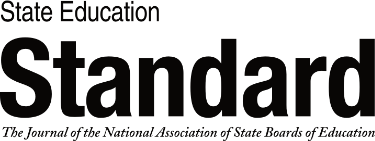The U.S. elementary and secondary teaching force in recent decades has changed significantly and in important, sometimes surprising ways. It has become far larger, far less experienced, less diverse by gender, and more diverse by race/ethnicity. And it remains unstable. Yet researchers, policymakers, and the public appear not to have much marked these trends, even the most dramatic ones.
I will summarize five of the key trends we identified, along with some takeaways and questions for state boards of education and others involved in state education policymaking to consider.
Five Trends Shaping the Teaching Force
Also In this Issue
Five Trends Shaping the Teaching Force
By Richard M. Ingersoll, Elizabeth Merrill, Daniel Stuckey, Gregory Collins and Brandon HarrisonState policymakers looking to increase recruitment and retention should keep an eye on these long-term trends.
The Uneven Landscape of Teacher Preparation
By Leslie T. FenwickState statutes impede students' equitable access to profession-ready teachers.
A Data-Driven Approach to Staffing Schools
By Hannah Putman and Heather PeskeLowering teacher standards may fail to solve actual pipeline problems and can create new ones.
Licensure Tests as Barriers to the Profession
By Victoria Van CleefStates should explore better means of assessing teachers' classroom readiness.
Teacher Preparation for Whole-Child Design
By Jennifer DePaoli and Ryan SaundersState leaders have a role in ensuring that educator preparation both models and reflects the science of learning and development.
Teacher Recruitment and Retention in Missouri
By Paul KatnikState leaders commit to efforts to attract and keep teachers in the classroom.
Ensuring Equity in Grow-Your-Own Programs
By Conra D. GistState-level criteria for programs' design can yield better outcomes in preparing and retaining diverse teachers.
Creating State Education Systems That Value Student Cultures
By William Rodick and Tanji Reed MarshallState boards can set the stage for learning environments that connect and engage all students.
Preparing Pre-K Teachers: Policy Considerations and Strategies
By Amaya Garcia and Cara SklarFour practices to increase the pool of skilled early educators stand out as promising.












 i
i
 i
i